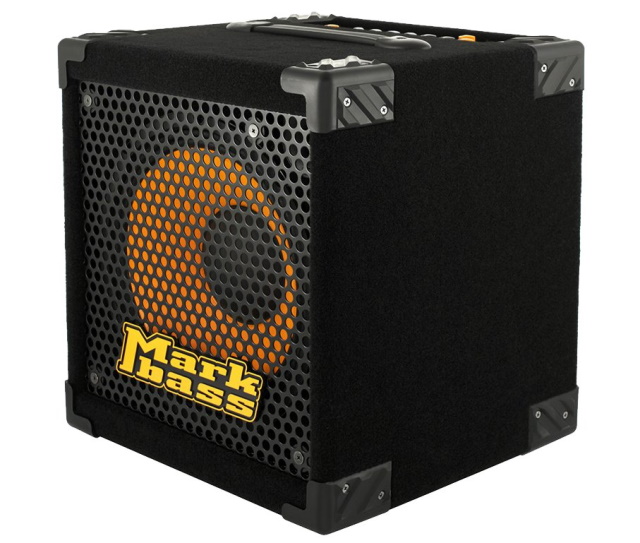Amps, stacks, cabs, racks, heads, speakers – the terminology used for audio amplification can be confusing. This is further fueled by misnomers and a tendency to use these terms loosely and/or out of context.
An amp is an all-in-one unit that may refer to a ‘combo amp’ or an amp head and a speaker working as one unit. A head refers to just the ‘amp head’ (no cabinet or speaker) that amplifies the electrical signal but cannot produce sound. It must be paired with a speaker or cabinet.
What good is a head if it cannot make any sound? Why do bass and guitar players often prefer to buy a head and a cabinet separately instead of the combination in the form of an amp? What is more important, head or cabinet?
Table of Contents
What is the point of an amp head?

A head is preferred over a combo amp because it is more versatile, easier to upgrade, and can offer more power and better tones.
You can mix and match it with multiple cabinets (speakers) to get varying sounds, which would not be possible with a pre-fitted combo amp.
Amp heads are capable of more volume due to better power capacity and the ability to pair them with large cabinets or speakers or connect extra speakers for more volume. This is useful for large venues such as arenas, big clubs, or amphitheaters.
A head + cab setup is versatile. It is easier to upgrade or add components as your needs evolve. There are various options available that are uniquely voiced with iconic tonal characteristics that may suit particular genres and styles.
For instance, the Diezel VH4 100W amp head is famous for its hi-gain tone while Bergantino bass cabinets are famous for their ‘glassy-sheen-tone-color’. You can also mix and match different brands, like a Fender head with an Ampeg cabinet, to come up with a unique sound.
Such tone sculpting possibilities and the power output of amp heads makes them more desirable for recording and gigging, especially in medium-to-large venues.
Difference between amp and speaker

An amp or amplifier is an electrical device with an integrated power amp and preamplifier that cannot produce audible sound.
A speaker or loudspeaker is a mechanical output device that creates the audio output by converting electromagnetic waves (from the amp) into sound waves – audio. The amp ‘drives’ the speaker i.e. makes the speaker make the sound.
Amp head vs cabinet vs speaker
The amp head and the cabinet are two parts of a rig or stack (see next section). Each has a distinct purpose: the head creates the audio signal and the cabinet projects it.
An amp head consists of an integrated preamp and power amp on the inside with tone-shaping controls like the EQ control panel (bass, mid, treble) and other knobs on the front panel. Amp heads are primarily of three types:
- Solid-state heads
- Tube amp heads
- Hybrid (tube preamp + solid-state power amp)
A cabinet is a wooden housing aka the loudspeaker enclosure in which the drivers sit. Drivers include speakers and tweeters. The amp creates the load (signal), and the cabinet takes the load and converts it into sound.
The cabinet is described by the number of speakers and their size. The number of speakers in a cabinet typically range from 1 to 4. Speakers also vary in size i.e. 10″, 12″, or 15″ speakers.
For instance, the Ampeg 810 cabinet = 8 speakers of size 10″. A 115 cabinet = 1 speaker of size 15″. You may also have different sized speakers in the same cabinet such as the Peavey PVH 1516, which has 1 x 15″ and 2 × 8″ speakers.
Difference between combo amp and head & cab

A combo amp is a combination of two components built into each other and sold as an all-in-one unit. In most cases, you cannot isolate these two components or change them individually.
The amp head and cabinet setup are commonly called a stack. It can be a full stack or a half stack. A full stack is an amp head + two speaker cabinets, whereas a half stack is an amp head + 1 speaker cabinet. That said, people often colloquially refer to both of these as ‘stack’ or ‘rig’.
Some bassists and guitarists prefer the simplicity of combo amps, which are typically compact and affordable. Others are willing to put up with the added cost, weight, and inconvenience of stacks (head + cabinet) because of the superior sound.
For most musicians, especially beginners, combo amps can deliver sufficient tone and volume. While they can be loud enough for rehearsals, practice, jams, and even recording, they cannot compete with the loudness of a full stack with a powerful head and multiple speakers.
Head & cab rigs are also a lot more versatile because they are not fixed to one another. Musicians own multiple cabinets and heads and mix and match according to their needs.
This can be useful to experiment and find your tone. Combo amps do not allow for such customization.
What is a tube amp head?
A tube head aka valve amp is the predecessor of the solid-state amp and uses vacuum tubes to power the signal. Tube amp heads can range from 1-100W in power and sound very different from other types.
Tube heads are famous for their ‘break up‘, which is the saturated overdrive that occurs when you crank up a low-wattage tube amp.
As you play through a tube amp head, the audio signal travels to a vacuum-tube preamp that boosts your signal to a decent level. You can manipulate the frequency components of the original signal via the control panel.
Once past the preamp, the signal goes to the power amp that amplifies it even further so that it is ready (loud enough) to generate the energy required to ‘sound the speaker’ i.e. transduced into a speaker that can project it.
What is the difference between a tube amp and a solid-state amp?
A tube amp head is valve-based and uses tube circuits to provide gain to a signal. A solid-state amp uses electronic transistors to derive amplification.
This technology difference affects the sound produced. A tube amp creates overdrive and adds gain to the harmonics while solid-state amps sound more distinct and loud.
Musicians often describe tube amp heads as ‘creamy’. They are known to be warm and responsive as opposed to more sterile-sounding solid-state amps.
On the other hand, solid-state amps have more headroom and definition. They are often described as more ‘crisp’.
Difference between a bass amp and a guitar amp
The key differences between a guitar and bass amp are speaker size and frequency range. They will also vary in features, weight, and power output.
While you could play a bass through a guitar speaker and vice versa especially at low volumes, they would not sound as good because a guitar speaker is not ‘voiced’ (or designed) for a bass.
Bass amps use bigger speakers (8″, 10″, 12″, and 15″) to produce low frequency sound and have more power to move it. Guitars amps are not designed for very low frequency sounds so they tend to be more compact with smaller speakers (8″, 10″, and 12″).
Even if a bass amp and guitar amp have the same speaker size, they use different circuit designs to drive the speaker. Because of this, when you play a bass through a guitar amp, it may sound distorted – the infamous ‘clipping’ – if you crank up the volume.

